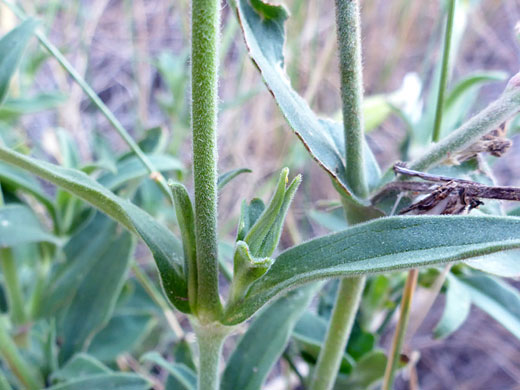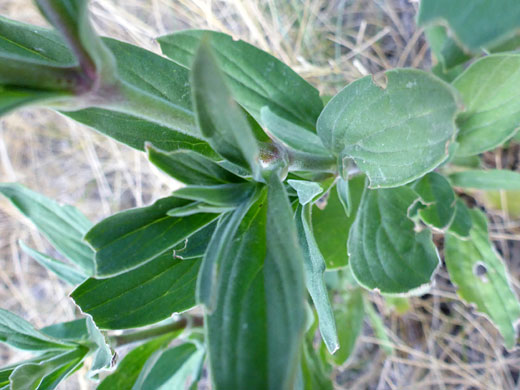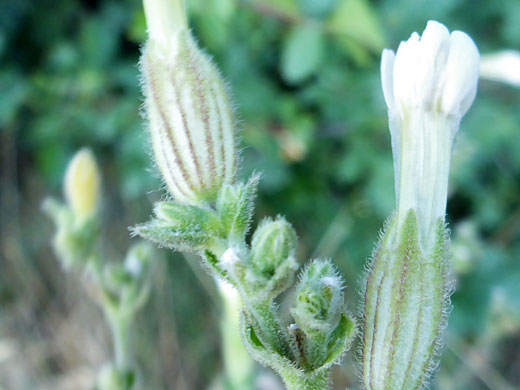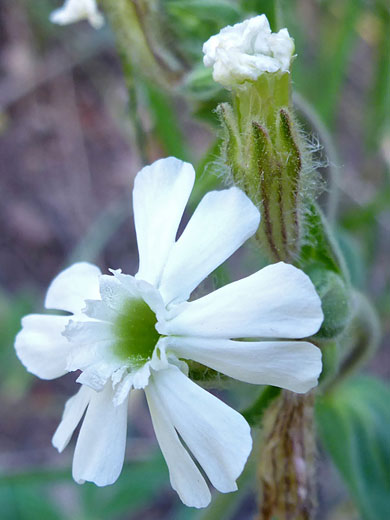Common names:
Bladder campion, white campion
Family:
Scientific name:
Silene latifolia
Main flower color:
Range:
Parts of all the western states except Texas and Oklahoma (non native)
Height:
Up to 3 feet
Habitat:
Roadsides, riverbanks, waste ground; from sea level to 9,000 feet
Leaves:
Oblong to lanceolate, up to 4.5 inches long and 1.2 inches wide
Season:
May to September
Silene latifolia originates in Europe, Asia and North Africa, and has been naturalized across most of the US. Flowers are produced in small, open clusters, subtended by bracts, and borne on stalks up to 2 inches long. Plants produce flowers with either stamens or pistils; for the former, the calyx has 10 veins, while for the latter it has 20 veins. The calyx is green, often reddish along the margins, and is a little less than one inch long. The calyx extends to five thin lobes, and all the outer surface is covered by both short and long hairs.
The five white petals are usually deeply lobed, but may be unlobed. When flowers are fully mature the petals are angled downwards slightly, below the plane. The stamens are held at about the same height as the calyx, while the stigmas are slightly higher.
Basal leaves are stalked, and usually withered at flowering time, while stem leaves are sessile and persistent. Both sides of the leaves are hairy. Leaves become progressively smaller up the stem.
The five white petals are usually deeply lobed, but may be unlobed. When flowers are fully mature the petals are angled downwards slightly, below the plane. The stamens are held at about the same height as the calyx, while the stigmas are slightly higher.
Basal leaves are stalked, and usually withered at flowering time, while stem leaves are sessile and persistent. Both sides of the leaves are hairy. Leaves become progressively smaller up the stem.
All Contents © Copyright The American Southwest | Comments and Questions | Contribute | Site Map







